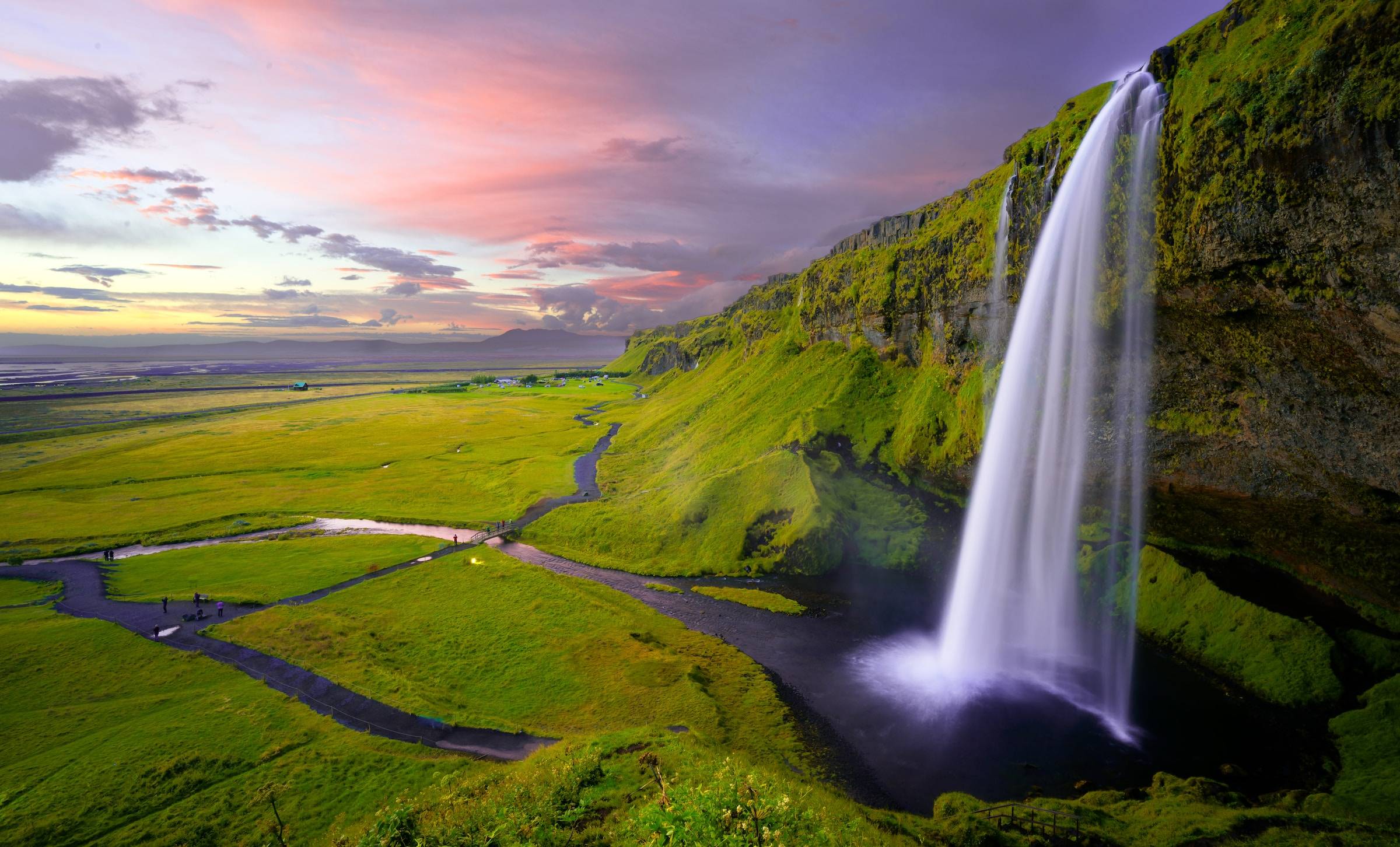Iceland Travel Guide
Quick Facts
 Currency Currency | Icelandic króna (kr) |
 Exchange Rate Exchange Rate | US$1 = kr125.63 |
 Language Language | Icelandic |
 English Fluency English Fluency | Moderate |
 Capital Capital | Reykjavik |
 Population Population | 0.37 million |
 Driving Side Driving Side | right |
 Plugs Plugs | C, F |
 Time Time | Greenwich Mean Time (UTCGMT+0) |
 Must-Try Must-Try | Hákarl, Skyr, Lamb |
Backpacker Budget: US$98 (kr 12,312)
| Hostel Dorm | US$30 (kr 3,769) |
| Takeaway Meal | US$15 (kr 1,884) |
| Public transport | US$10 (kr 1,256) |
| Long-distance bus | US$50 (kr 6,282) |
| Entrance Fee | US$20 (kr 2,513) |
| Beer | US$10 (kr 1,256) |
When to go?
| January-March | Low season |
| April-June | Shoulder season |
| July-August | High season |
| September-October | Shoulder season |
| November-December | Low season |
What's unique?
Welcome to Iceland, a land of fire and ice that will take your breath away. Known for its stunning landscapes, natural wonders, and vibrant culture, Iceland offers a one-of-a-kind travel experience.
Iceland is famous for its geothermal activity, with numerous volcanoes, hot springs, and geysers scattered across the country. Witness the raw power of nature at the mesmerizing Gullfoss waterfall, where glacial water thunders down a series of cascades into a deep gorge. Explore the dramatic volcanic landscape at Þingvellir National Park, where you can walk between the Eurasian and North American tectonic plates.
But Iceland isn't just about geological wonders. The country boasts an array of unique experiences such as bathing in natural hot springs like the world-famous Blue Lagoon or discovering hidden gems like Seljalandsfoss waterfall, which allows you to walk behind it for an unforgettable perspective.
With its long summer days and distinct winter nights illuminated by the magical Northern Lights, Iceland offers endless opportunities for outdoor adventures. From hiking to glaciers and black sand beaches to exploring ice caves or going whale watching in Reykjavik's harbor, there is no shortage of thrilling activities.
Iceland Must-Sees (1 week)
- 1
Reykjavik
The capital and largest city of Iceland, known for its colorful houses, arts scene, and vibrant nightlife.
- 2
Golden Circle
A popular tourist route that includes three major attractions: Thingvellir National Park, Geysir geothermal area, and Gullfoss waterfall.
- 3
Jokulsarlon Glacier Lagoon
A stunning glacial lake filled with floating icebergs, located in Southeast Iceland.
- 4
Snaefellsnes Peninsula
A scenic peninsula that offers diverse landscapes, from glaciers and waterfalls to lava fields and charming fishing villages.
Best Experiences
Fun Fact
Icelandic is one of the closest living languages to Old Norse, the language of the Vikings.
FAQ
What is the best time to visit Iceland?
The best time to visit Iceland is during the summer months of July and August, when the weather is mild and the days are long. This is also the peak tourist season, so expect crowded attractions and higher prices. If you want to avoid the crowds, the shoulder seasons of April-June and September-October offer slightly fewer tourists but still pleasant weather. However, keep in mind that the weather in Iceland can be unpredictable, so be prepared for rain, wind, and rapidly changing conditions at any time of the year.
Is it safe to travel to Iceland?
Iceland is generally considered a safe country to travel to. It has low crime rates and a high standard of living. However, like any destination, it is always important to take precautions and be aware of your surroundings. It is recommended to avoid off-road driving, as it is illegal and can damage the fragile nature of the country. Additionally, always check the weather and road conditions before embarking on outdoor activities, as Iceland's weather can be unpredictable and harsh.
What are some popular tourist attractions in Iceland?
Iceland is known for its stunning natural landscapes and unique geological features. Some popular tourist attractions include the Blue Lagoon, a geothermal spa with mineral-rich waters, the Golden Circle route which includes the geysers of Haukadalur, the waterfall Gullfoss, and the Þingvellir National Park, known for its historical and geological significance. Other must-visit destinations include the Jökulsárlón Glacier Lagoon, the Seljalandsfoss and Skógafoss waterfalls, and the Snæfellsnes Peninsula with its picturesque landscapes.
What is the best way to get around in Iceland?
The best way to explore Iceland is by renting a car. This gives you the freedom to travel at your own pace and explore the country's remote and scenic locations. It is recommended to choose a 4x4 vehicle, especially if you plan to visit the Highlands or venture off the main roads. Public transportation options are limited outside of Reykjavik, so a car provides the most convenience. Another popular option is to join guided tours, especially for activities such as glacier hiking or ice cave exploration.
Travel Tips
- Money Cards are accepted universally
- ATM Fees Most ATMs charge fees, but you can find fee-free ATMs
- Do remove your shoes when entering someone's home.
- Do show respect for the environment and follow hiking trails to avoid damaging the fragile nature.
- Do respect designated smoking areas and avoid smoking in public places where it is prohibited.
- Don't expect to find many shops open on Sundays as it is traditionally a day of rest.
- Don't touch or disturb wildlife, especially birds and seals.
- Don't swim in geothermal areas or hot springs unless they are designated for bathing.
